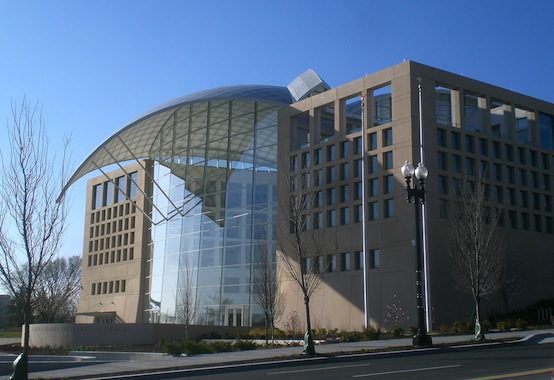The Institute of Peace Suddenly Cares About History, After Burying It

There’s really nothing you can do but laugh at this:
News4 learned that the institute is requesting a section of the roadway be moved about 150 feet farther away from the building to “reduce noise and vibration.” According to documents listed in the District Department of Transportation’s Transportation Improvement Program, a proposal is on the table to shift Constitution Avenue NW, between 23rd Street and the outbound Roosevelt Bridge. But, DDOT is cautioning, this discussion is still in a very preliminary stage.
Documents from the DC Department of Transportation state that one of the reasons to shift Constitution Avenue is to give folks better access to a historical landmark:
the project will provide historical and recreational use – Braddock’s Rock is located immediately south of westbound Constitution Avenue with poor public access. Realigning the road south of Braddock’s Rock will allow for better public access to this National Landmark
It’s funny, though, nobody was concerned about the area’s history when historic preservation laws were flouted in the process of constructing the thing. Institute staff stopped responding to emails after telling the District’s archaeologist that they hadn’t budgeted for surveys. Last fall I wrote about the history of the site and the USIP’s shoddy preservation compliance:
Citing previous construction–the Institute of Peace was built atop a parking lot–the final pre-building environmental report released in 2006 said it was “unlikely” that archaeological remains would have been present at the site. The report focused on how the USIP design was a fine aesthetic match for the Mall, fitting in with the building lines along 23rd Street, and not overshadowing the Lincoln Memorial. No test pits were ever dug, and it was assumed that there was nothing of historical or archaeological value on the site.
After Clark began construction, they started finding things. According to Jan Herman, historian at the Old Naval Observatory and author of a book on the property, construction workers uncovered glass and metal objects, which they removed, placed in boxes, and stored in a trailer. … Eventually the construction company turned over what was found–primarily bottles and metal objects–to Jan Herman. But we’ll never know what was carted off in trucks like so much dirt, buried under the new foundation, or taken by construction workers.
What’s so puzzling about this development is that the planning surveys focused largely on aesthetic matters like light pollution and how the building design might fit into the skyline—rather than the site’s history—so you’d think they would have considered noise too. Apparently not.
If we’re lucky, DDOT will deny the request, USIP staff will find the building so inhospitable they can’t bear to work there anymore, and we can demolish the whole pointless thing. Sadly, I doubt that’s going to happen.
(The USIP is not to be confused with Ron Paul’s new foreign policy institute, which launched today.)
Comments